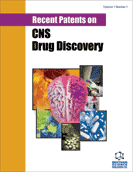Abstract
The cholinergic system is expressed in neuronal and in non-neuronal tissues. Acetylcholine (ACh), synthesized in and out of the nervous system can locally contribute to modulation of various cell functions (e.g. survival, proliferation). Considering that the cholinergic system and its functions are impaired in a number of disorders, the identification of new pharmacological approaches to regulate cholinergic system components appears of great relevance. The present review focuses on recent pharmacological drugs able to modulate the activity of cholinergic receptors and thereby, cholinergic function, with an emphasis on the muscarinic receptor subtype, and additionally covers the cholinesterases, the main enzymes involved in ACh hydrolysis.
The presence and function of muscarinic receptor subtypes both in neuronal and non-neuronal cells has been demonstrated using extensive pharmacological data emerging from studies on transgenic mice. The possible involvement of ACh in different pathologies has been proposed in recent years and is becoming an important area of study. Although the lack of selective muscarinic receptor ligands has for a long time limited the definition of therapeutic treatment based on muscarinic receptors as targets, some muscarinic ligands such as cevimeline (patents US4855290; US5571918) or xanomeline (patent, US5980933) have been developed and used in pre-clinical or in clinical studies for the treatment of nervous system diseases (Alzheimer’ and Sjogren’s diseases). The present review focuses on the potential implications of muscarinic receptors in different pathologies, including tumors. Moreover, the future use of muscarinic ligands in therapeutic protocols in cancer therapy will be discussed, considering that some muscarinic antagonists currently used in the treatment of genitourinary disease (e.g. darifenacin, patent, US5096890; US6106864) have also been demonstrated to arrest tumor progression in nude mice.
The involvement of muscarinic receptors in nociception also is over-viewed. In fact, muscarinic agonists such as vedaclidine, CMI-936 and CMI-1145 have been demonstrated to have analgesic effects in animal models comparable or more pronounced to those produced by morphine or opiates.
Likewise, the crucial role of cholinesterases (acetylcholinesterase and butirylcholinesterase) in neural transmission is discussed, as large number of drugs inhibiting cholinesterase activity have become of increasing relevance particularly for the treatment of neurodegenerative disorders. Herein we summarize the current knowledge of the cholinesterase inhibitors with particular attention to recent patents for Alzheimer’s disease drugs.
Keywords: Acetylcholinesterase, butirylcholinesterase, muscarinic receptors, neurological diseases, nociception, tumors
 39
39





















